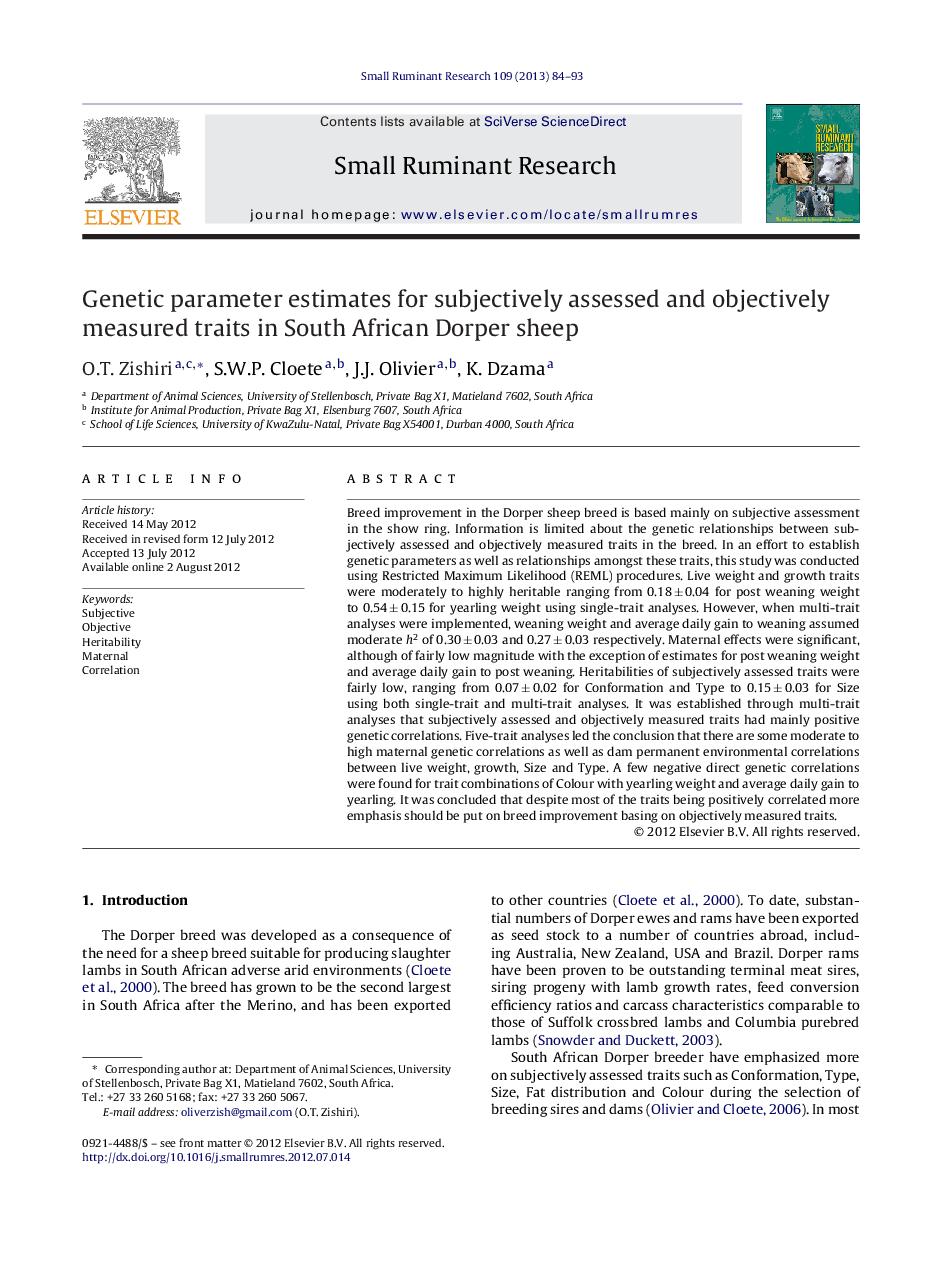| Article ID | Journal | Published Year | Pages | File Type |
|---|---|---|---|---|
| 5796065 | Small Ruminant Research | 2013 | 10 Pages |
Breed improvement in the Dorper sheep breed is based mainly on subjective assessment in the show ring. Information is limited about the genetic relationships between subjectively assessed and objectively measured traits in the breed. In an effort to establish genetic parameters as well as relationships amongst these traits, this study was conducted using Restricted Maximum Likelihood (REML) procedures. Live weight and growth traits were moderately to highly heritable ranging from 0.18 ± 0.04 for post weaning weight to 0.54 ± 0.15 for yearling weight using single-trait analyses. However, when multi-trait analyses were implemented, weaning weight and average daily gain to weaning assumed moderate h2 of 0.30 ± 0.03 and 0.27 ± 0.03 respectively. Maternal effects were significant, although of fairly low magnitude with the exception of estimates for post weaning weight and average daily gain to post weaning. Heritabilities of subjectively assessed traits were fairly low, ranging from 0.07 ± 0.02 for Conformation and Type to 0.15 ± 0.03 for Size using both single-trait and multi-trait analyses. It was established through multi-trait analyses that subjectively assessed and objectively measured traits had mainly positive genetic correlations. Five-trait analyses led the conclusion that there are some moderate to high maternal genetic correlations as well as dam permanent environmental correlations between live weight, growth, Size and Type. A few negative direct genetic correlations were found for trait combinations of Colour with yearling weight and average daily gain to yearling. It was concluded that despite most of the traits being positively correlated more emphasis should be put on breed improvement basing on objectively measured traits.
